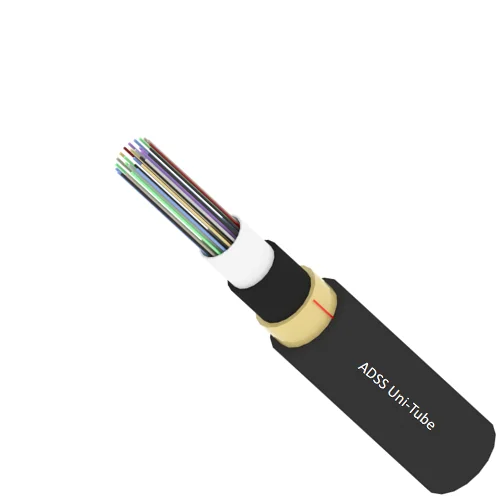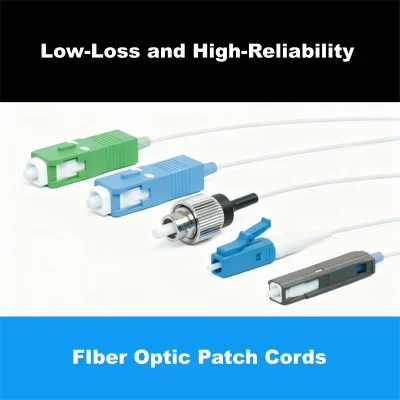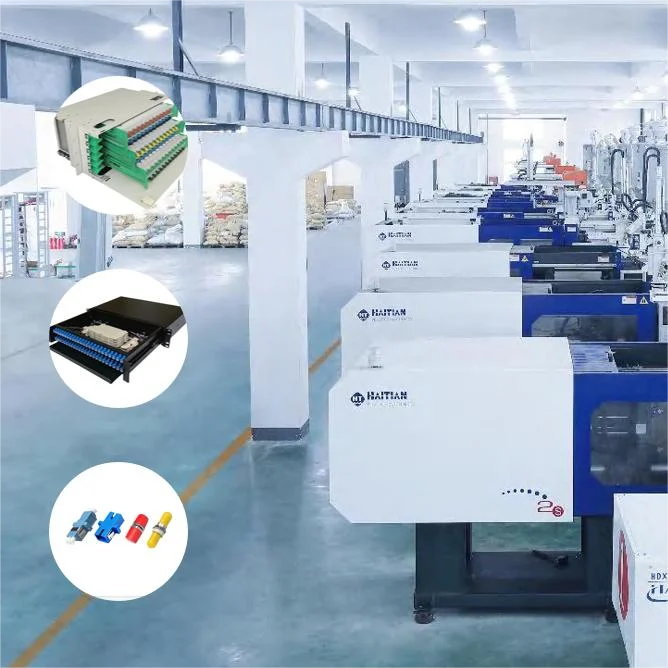Application
- Building A, Republic International Business Plaza, No. 3699 Gonghexin Road, Jing'an District, Shanghai
- +86-21-59175887
- market@soctfiber.com
- 86-17321363317
- 86-13341796231
Oil & Gas
How Are Fiber Optic Cables Transforming the Oil & Gas Industry?
Struggling with unreliable data in harsh conditions? Traditional cables fail often. Fiber optics offer a robust solution, changing how the oil and gas industry operates for the better.
Fiber optic cables are transforming the oil and gas industry by providing reliable, high-speed data transmission and sensing capabilities in harsh environments. They enhance safety, improve operational efficiency, and enable advanced monitoring techniques.

I’ve seen many industries evolve with new technologies. The oil and gas sector is no different. It faces some of the toughest challenges out there. When I first learned about how fiber optics were being used, I was amazed. It’s a game-changer. Let’s explore how these tiny strands of glass are making such a big impact. You might be surprised at what they can do.
What Makes Fiber Optics So Tough for Oil & Gas Jobs?
Worried about extreme temperatures and corrosive materials? Old cables can’t handle the pressure. Fiber optics are built differently, offering unmatched durability for demanding oil and gas sites.
Fiber optics are ideal for harsh oil and gas environments because they are immune to electromagnetic interference (EMI), resistant to corrosion, and can withstand extreme temperatures and pressures. This makes them incredibly reliable.

When I think about the conditions on an oil rig or along a pipeline, words like ‘extreme’ and ‘unforgiving’ come to mind. I’ve dealt with my share of equipment failures in tough factory settings, but the oil and gas industry takes it to another level. That’s where fiber optics truly shine.
Why Fiber Optics Withstand the Pressure
Traditional copper cables have always been a weak link. They corrode. They pick up electrical noise, especially with all that heavy machinery around. And extreme heat or cold? That can really mess with their performance. Fiber optics, on the other hand, are made of glass or plastic. This makes them inherently different.
Here’s a quick breakdown of their advantages in harsh conditions:
| Feature | Benefit in Oil & Gas | Why it Matters |
|---|---|---|
| Immunity to EMI | No interference from motors, generators, or power lines. | Clean, reliable data signals for critical systems. |
| Corrosion Resistance | Glass doesn’t rust or degrade from chemicals. | Longer lifespan, less maintenance in corrosive areas. |
| Temperature Tolerance | Can operate in a very wide temperature range. | Suitable for desert heat or subsea cold. |
| Intrinsic Safety | No sparks, as they transmit light, not electricity. | Safer in potentially explosive atmospheres. |
| Small Size & Weight | Easier to install in tight spaces, less structural load. | Reduces installation complexity and cost. |
I remember a client in a different heavy industry who constantly battled signal degradation due to massive electrical motors nearby. Switching to fiber optics solved his problem overnight. Imagine the relief for an oil and gas operator facing even more intense interferences. This robustness is not just a nice-to-have; it’s essential for keeping operations running smoothly and safely. These cables keep working when others would give up.
How Do Fiber Optic Sensors Improve Oil & Gas Data Collection?
Need precise, real-time data from remote or dangerous areas? Manual checks are slow and risky. Fiber optic sensors offer continuous, accurate monitoring, transforming data acquisition significantly.
Fiber optic sensors (FOS) improve oil and gas data collection by enabling distributed sensing of temperature, pressure, strain, and acoustics along the entire cable length. This provides detailed, real-time insights.

Data is king in modern industry. I’ve always believed that what you can measure, you can manage. In the oil and gas sector, getting accurate and timely data can be incredibly challenging. Think about monitoring a long pipeline or conditions deep within a wellbore. Sending people out is often impractical or dangerous. This is where fiber optic sensing, or FOS, really changes the game. It allows companies to “listen” and “feel” what’s happening over vast distances.
The Power of Distributed Sensing
Unlike traditional point sensors that only measure at one specific location, a fiber optic cable can become the sensor. Technologies like Distributed Temperature Sensing (DTS), Distributed Acoustic Sensing (DAS), and Distributed Strain Sensing (DSS) use the fiber itself to gather information continuously along its entire length. This means you get a complete picture, not just snapshots.
Here’s how these systems contribute:
| Sensing Type | Parameter Measured | Key Applications in Oil & Gas | Impact |
|---|---|---|---|
| DTS | Temperature | Wellbore monitoring, pipeline leak detection, steam flood optimization. | Early problem detection, improved production efficiency, enhanced safety. |
| DAS | Acoustic/Vibration | Pipeline integrity (leaks, intrusion), downhole flow monitoring, seismic surveys. | Real-time security, better reservoir understanding, operational awareness. |
| DSS | Strain/Stress | Pipeline & structural health monitoring (bending, deformation), well integrity. | Prevents failures, predicts maintenance needs, ensures structural safety. |
I once visited a facility that was struggling to pinpoint tiny, intermittent leaks in a complex network of pipes. They installed a DTS system. Suddenly, they could see temperature anomalies exactly where the leaks were occurring, in real-time. For an oil and gas company, this ability to “see” what’s happening over many kilometers, deep underground or underwater, is invaluable. It’s about moving from reactive fixes to proactive management, saving time, money, and potentially preventing disasters.
How Are Fiber Optic Cables Making Oil & Gas Operations Safer?
Concerned about safety hazards in explosive environments? Electrical systems pose risks. Fiber optics, being non-electrical, inherently reduce ignition dangers, enhancing overall site safety.
Fiber optic cables enhance safety in oil and gas by being intrinsically safe (no sparks), enabling reliable emergency communication systems, and facilitating remote monitoring of hazardous areas, reducing human exposure.

Safety is paramount in the oil and gas industry. The potential for accidents is high. The consequences can be devastating. I’ve always stressed that a safe operation is an efficient operation. Any technology that can reduce risk is worth its weight in gold. Fiber optics offer several key advantages in this critical area, making dangerous jobs a bit less dangerous.
Reducing Risks with Light, Not Electricity
One of the biggest safety benefits comes from the fundamental nature of fiber optics. They transmit data using light pulses, not electrical currents. This makes them “intrinsically safe.” This means they don’t create sparks.
Here’s why this is a big deal for safety:
- No Spark Hazard: In environments where flammable gases or materials might be present (Zone 0, 1, or 2 hazardous areas), traditional electrical cables can be an ignition source if they spark. Fiber optics eliminate this risk completely. I remember touring a chemical plant where every electrical installation was heavily protected and inspected. Fiber optics would simplify so much and reduce worry.
- Reliable Emergency Systems: Communication is vital during an emergency. Fiber optic networks are robust. They are less susceptible to damage or interference that could cripple copper-based systems during a crisis. This ensures that alarms, PAGA (Public Address and General Alarm) systems, and control signals work when needed most.
- Remote Monitoring of Hazardous Areas: As we discussed with FOS, fiber optics allow for extensive monitoring of potentially dangerous equipment or environments without sending personnel in. This drastically reduces human exposure to risks. Imagine monitoring a high-pressure pipeline or a confined space from a safe control room. Fewer people in harm’s way is always a good outcome.
Let’s consider a practical scenario:
| Safety Challenge | Traditional Approach Risk | Fiber Optic Solution |
|---|---|---|
| Monitoring in explosive area | Spark risk from electrical sensors/cables. | Intrinsically safe fiber optic sensors and cables. |
| Communication during fire | Copper cables can melt, short-circuit, lose signal. | Fiber cables can be designed for high fire resistance. |
| Pipeline integrity checks | Manual patrols, risk to personnel, intermittent data. | Continuous DAS/DTS monitoring, remote data, early alerts. |
The peace of mind that comes from knowing your critical systems are inherently safer and more reliable is immense. For oil and gas companies, this isn’t just about compliance. It’s about protecting lives, the environment, and valuable assets. Fiber optics are a key enabler for a safer working environment. This technology helps people go home safe.
Conclusion
Fiber optics are truly revolutionizing oil and gas. They bring unmatched reliability, advanced sensing, and enhanced safety, paving the way for smarter, more efficient operations in demanding environments.
Related Products
No results found.




